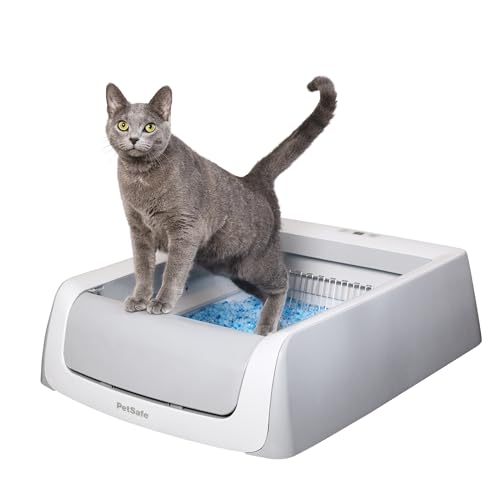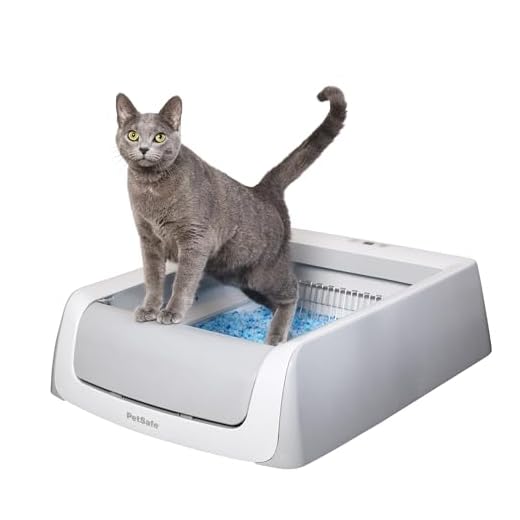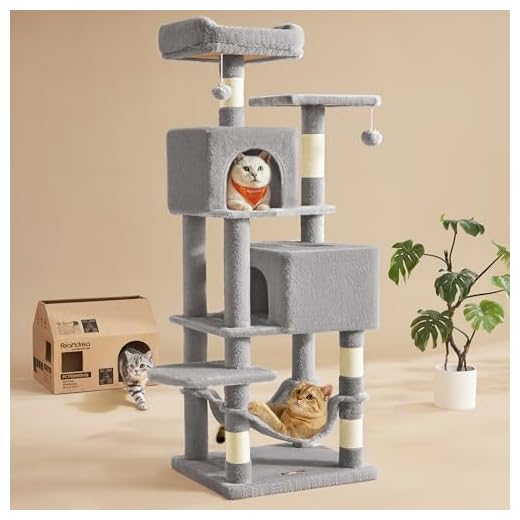



First off, create a safe space for me. Before that furry bundle arrives, set up a quiet area where I can retreat. This should include my favorite things–bed, toys, and litter box. It’s essential to ensure I have my own territory to feel secure.
Next, allow me to get acquainted with the newcomer at my own pace. Start by letting the puppy explore the home while I observe from a distance. This way, I can assess the situation without feeling threatened. Gradually, introduce the scents of the little one by swapping blankets or toys, allowing me to familiarize myself with the new presence.
When it’s time for a face-to-face meeting, keep it calm. Use a leash for the pup and let me approach on my terms. If I feel overwhelmed, it’s perfectly fine to retreat. Patience is key here. Give me time to adjust, and don’t rush the process. A slow introduction will lay the groundwork for a harmonious relationship.
Preparing Your Feline for the Arrival
Establish a safe haven for me. Set up a separate space with essentials like food, water, litter box, and cozy resting spots. This area should be off-limits to the newcomer, allowing me to feel secure while observing the situation from a distance.
Gradually introduce the scent of the small canine by using a soft cloth to rub the puppy and then letting me sniff it. This will help me familiarize myself with the new scent without the pressure of direct interaction.
Adjusting the Environment
Begin modifying my environment to accommodate the change. Rearrange furniture to create vertical spaces, such as shelves or cat trees, where I can escape and feel in control. This will help me feel less threatened and more comfortable with the presence of the newcomer.
Maintain Routine
Keep my daily routine consistent. Feed me at the same times, engage in our usual play sessions, and maintain my grooming schedule. Stability is key during this transition, as it helps reduce anxiety and keeps me feeling secure.
Managing Interactions and Monitoring Behavior
It’s crucial to supervise every encounter between the little furball and the newcomer. Always keep a watchful eye during their initial meetings. Ensure that both of us have safe spaces to retreat to if things get too intense. I appreciate a cozy nook where I can observe without feeling threatened.
Recognizing Body Language
Understanding our body language can prevent misunderstandings. Look for signs of discomfort, such as flattened ears, a twitching tail, or hissing. If either of us exhibits these behaviors, it’s time to separate and try again later. Positive interactions should be encouraged, so reward good behavior with treats or praise.
Setting Boundaries
Establish clear boundaries. As the resident feline, I need to feel secure in my territory. The newcomer should have designated play areas and toys to keep them engaged. If I seem uninterested or stressed, it’s best to create physical barriers, like baby gates, until we’re both comfortable. Also, ensure that items that could be harmful, like dracaena plants, are out of reach. For more information on toxic plants, check this link: are dracaena plants toxic to cats.
Be cautious with treats as well. Some snacks like raisins can be dangerous for us. Stay informed about what’s safe and what’s not: are raisins toxic for cats. Keeping a close eye on our interactions while reinforcing positive behavior will help establish a harmonious household.
First off, create a safe space for me. Before that furry bundle arrives, set up a quiet area where I can retreat. This should include my favorite things–bed, toys, and litter box. It’s essential to ensure I have my own territory to feel secure.
Next, allow me to get acquainted with the newcomer at my own pace. Start by letting the puppy explore the home while I observe from a distance. This way, I can assess the situation without feeling threatened. Gradually, introduce the scents of the little one by swapping blankets or toys, allowing me to familiarize myself with the new presence.
When it’s time for a face-to-face meeting, keep it calm. Use a leash for the pup and let me approach on my terms. If I feel overwhelmed, it’s perfectly fine to retreat. Patience is key here. Give me time to adjust, and don’t rush the process. A slow introduction will lay the groundwork for a harmonious relationship.
Preparing Your Feline for the Arrival
Establish a safe haven for me. Set up a separate space with essentials like food, water, litter box, and cozy resting spots. This area should be off-limits to the newcomer, allowing me to feel secure while observing the situation from a distance.
Gradually introduce the scent of the small canine by using a soft cloth to rub the puppy and then letting me sniff it. This will help me familiarize myself with the new scent without the pressure of direct interaction.
Adjusting the Environment
Begin modifying my environment to accommodate the change. Rearrange furniture to create vertical spaces, such as shelves or cat trees, where I can escape and feel in control. This will help me feel less threatened and more comfortable with the presence of the newcomer.
Maintain Routine
Keep my daily routine consistent. Feed me at the same times, engage in our usual play sessions, and maintain my grooming schedule. Stability is key during this transition, as it helps reduce anxiety and keeps me feeling secure.
Managing Interactions and Monitoring Behavior
It’s crucial to supervise every encounter between the little furball and the newcomer. Always keep a watchful eye during their initial meetings. Ensure that both of us have safe spaces to retreat to if things get too intense. I appreciate a cozy nook where I can observe without feeling threatened.
Recognizing Body Language
Understanding our body language can prevent misunderstandings. Look for signs of discomfort, such as flattened ears, a twitching tail, or hissing. If either of us exhibits these behaviors, it’s time to separate and try again later. Positive interactions should be encouraged, so reward good behavior with treats or praise.
Setting Boundaries
Establish clear boundaries. As the resident feline, I need to feel secure in my territory. The newcomer should have designated play areas and toys to keep them engaged. If I seem uninterested or stressed, it’s best to create physical barriers, like baby gates, until we’re both comfortable. Also, ensure that items that could be harmful, like dracaena plants, are out of reach. For more information on toxic plants, check this link: are dracaena plants toxic to cats.
Be cautious with treats as well. Some snacks like raisins can be dangerous for us. Stay informed about what’s safe and what’s not: are raisins toxic for cats. Keeping a close eye on our interactions while reinforcing positive behavior will help establish a harmonious household.
First off, create a safe space for me. Before that furry bundle arrives, set up a quiet area where I can retreat. This should include my favorite things–bed, toys, and litter box. It’s essential to ensure I have my own territory to feel secure.
Next, allow me to get acquainted with the newcomer at my own pace. Start by letting the puppy explore the home while I observe from a distance. This way, I can assess the situation without feeling threatened. Gradually, introduce the scents of the little one by swapping blankets or toys, allowing me to familiarize myself with the new presence.
When it’s time for a face-to-face meeting, keep it calm. Use a leash for the pup and let me approach on my terms. If I feel overwhelmed, it’s perfectly fine to retreat. Patience is key here. Give me time to adjust, and don’t rush the process. A slow introduction will lay the groundwork for a harmonious relationship.
Preparing Your Feline for the Arrival
Establish a safe haven for me. Set up a separate space with essentials like food, water, litter box, and cozy resting spots. This area should be off-limits to the newcomer, allowing me to feel secure while observing the situation from a distance.
Gradually introduce the scent of the small canine by using a soft cloth to rub the puppy and then letting me sniff it. This will help me familiarize myself with the new scent without the pressure of direct interaction.
Adjusting the Environment
Begin modifying my environment to accommodate the change. Rearrange furniture to create vertical spaces, such as shelves or cat trees, where I can escape and feel in control. This will help me feel less threatened and more comfortable with the presence of the newcomer.
Maintain Routine
Keep my daily routine consistent. Feed me at the same times, engage in our usual play sessions, and maintain my grooming schedule. Stability is key during this transition, as it helps reduce anxiety and keeps me feeling secure.
Managing Interactions and Monitoring Behavior
It’s crucial to supervise every encounter between the little furball and the newcomer. Always keep a watchful eye during their initial meetings. Ensure that both of us have safe spaces to retreat to if things get too intense. I appreciate a cozy nook where I can observe without feeling threatened.
Recognizing Body Language
Understanding our body language can prevent misunderstandings. Look for signs of discomfort, such as flattened ears, a twitching tail, or hissing. If either of us exhibits these behaviors, it’s time to separate and try again later. Positive interactions should be encouraged, so reward good behavior with treats or praise.
Setting Boundaries
Establish clear boundaries. As the resident feline, I need to feel secure in my territory. The newcomer should have designated play areas and toys to keep them engaged. If I seem uninterested or stressed, it’s best to create physical barriers, like baby gates, until we’re both comfortable. Also, ensure that items that could be harmful, like dracaena plants, are out of reach. For more information on toxic plants, check this link: are dracaena plants toxic to cats.
Be cautious with treats as well. Some snacks like raisins can be dangerous for us. Stay informed about what’s safe and what’s not: are raisins toxic for cats. Keeping a close eye on our interactions while reinforcing positive behavior will help establish a harmonious household.










